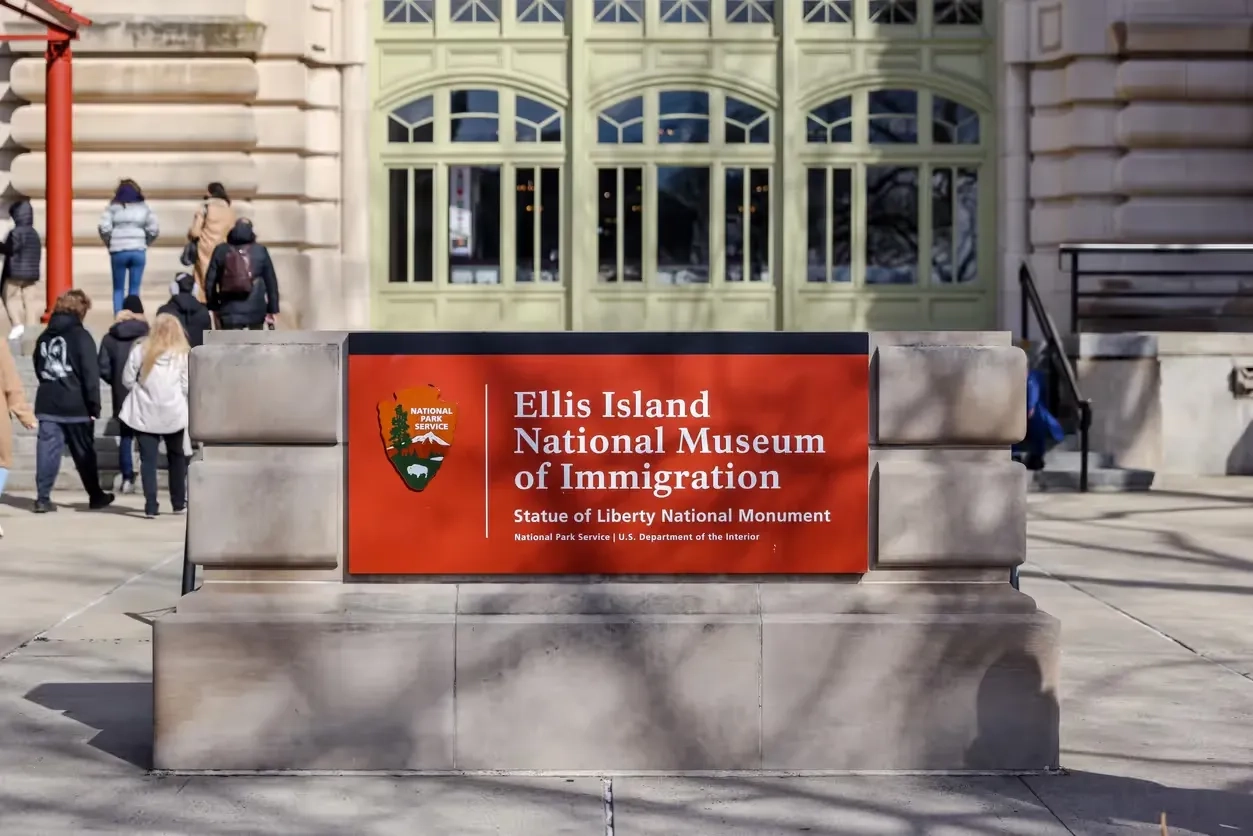The immigration experience, and each immigrant’s story, can be a constant source of inspiration. But when you’re in the thick of immigration casework, it can be challenging to continuously find that inspiration and remember the context and history behind it. After all, immigration professionals are people too.
Visiting an immigration-related museum or historic site can help. Looking at memorabilia or artifacts, photo galleries or otherwise engaging with immigration stories in a curated space can be a great source of inspiration and continue to revive your commitment to the work. Indeed, you can even learn the history of specific immigrant communities, explore the way immigration laws changed the country’s landscape, and even put yourself in the shoes of someone traversing the oceans by boat decades or centuries ago.
So, whether you visit one of these sites while traveling or if you happen to have one of them nearby, here is a list of notable immigration-related or immigration-adjacent museums and historical sites across the United States.
Excellent immigration-focused museums and historical sites in the US
The following is a sample of historical sites, museums, and educational sites centered around immigration in general or the history of specific immigrant groups across the US. The twelve sites in this article are not an exhaustive list, but it’s a place to start for readers in different parts of the country.
Let’s begin with those managed by the National Park Service and move on to other more regional ones as the list goes on.
1. Ellis Island National Museum of Immigration
One of the most famous museums in the world, the Ellis Island museum building is itself a historical site. The Ellis Island port of entry in New York City was the official entry into the United States for millions of immigrants starting in the late 19th century, and the former immigration station building now holds the National Museum of Immigration, which offers a comprehensive exhibition of the history of immigration regulation in the United States. It also highlights prominent waves of immigration from specific countries, such as Italy and Ireland, as most immigrants arriving through Ellis Island were of European origin. You can also visit the Family History Center, where you can search over 65 million records, including immigration registries and documents, passenger records, and images of some ships bringing immigrants over.
In addition to the National Museum of Immigration at Ellis Island, this National Park allows you to make the most of your visit and access Liberty Island to see the Statue of Liberty: a symbol of hope and opportunity for millions of immigrants worldwide over time.
2. U.S. Immigration Station, Angel Island
Most immigrants arriving through Angel Island came from Asia; few Asian immigrants made it to the US before the 18th century. Chinese immigrants primarily anchored in the US in large numbers in the second part of the 19th century to support gold mining, railroad construction, and other industries. Angel Island was also a detention center where Japanese Americans were incarcerated during World War II. If you go on a tour, you can visit the detention center and see the barracks where detainees were held.
Similarly to Ellis Island, you can look up family records at Angel Island; the more information you have, the better. The Immigration Station has two destinations: the Angel Island Immigration Museum, where you can see a comprehensive overview of immigration to the US through the Pacific, and the more specific Detention Barracks Museum and World War II Mess Hall, which recreated the conditions in which Asian immigrants, and later, Asian Americans, were detained at different points during the first half of the 20th century.
The US Immigration Station is in Angel Island State Park, a natural treasure with beaches, smaller parks, and hiking trails. Visiting the US Immigration Station could be a perfect complement to a hike or a picnic outside.
3. National Border Patrol Museum
Located in El Paso, Texas, on the southern border with Mexico, the Border Patrol Museum showcases the history of border patrolling from before the time the agency existed to the present day. The museum is not associated with the US Border Patrol government agency; it’s a private, not-for-profit museum, and admission is free. Given the complicated history of Border Patrol with immigrant communities, the museum hopes to provide a broader perspective of the agency and its work, including some of the challenges agents faced over the years due to regulatory shortcomings and other practical challenges.
Exhibits include documents, artifacts, and vehicle replicas, and it can be an exciting opportunity to gain perspective on how immigration through the southern border, and law enforcement in response to it, has changed over time; The museum also houses a Memorial Library open to researchers on border security.
4. California Migration Museum
Located in San Francisco, the California Migration Museum showcases the profound impact of immigration in California by exploring the history of specific migrant groups in particular parts of the state. Some examples include San Francisco’s Chinatown, the Irish immigrants that first settled in Eureka Valley, and the El Salvadoran migrants that settled in the Mission Valley to work in coffee plantations in the 1980s.
The museum showcases these migrant stories through self-paced audio tours, augmented reality experiences, and artifact exhibits. The California Migration Museum aims to show how California has welcomed immigrants from different places over time and the effect immigrants had on the state’s economic growth without ignoring policies that discriminated against immigrants. The museum opened in 2021, so expect exhibits to change over time.
5. Museum of Danish America
Located in Elk Horn, Iowa, the Museum of Danish America (formerly the Danish Immigrant Museum) strives to “preserve the history of Danish immigration to America.” The Museum of Danish America houses over 35,000 artifacts, most of which are donated family heirlooms. Through its permanent collection, the Danish American Museum shows how Danish families in the United States have built a community and preserved their heritage. Like similar museums, families of Danish origin can search the museum records to locate their ancestors and conduct research at the museum library.
Other museums focusing on Danish immigration in other parts of the country include the Danish American Archive and Library in Blair, Nebraska, the Danish Immigrant Archives at Grand View University in Des Moines, Iowa, and the Danish American Heritage Society in Salem, Oregon.
6. Swedish American Museum Chicago
The Swedish American Museum is in a traditionally Swedish area of Chicago. Its location gives the museum an additional level of character, as it allows you to see the history of the community while in it. Through its historical artifacts, art exhibits, and genealogy records, the museum provides an insightful view into Swedish immigration to the United States.
The museum also includes the Nordic house, the cultural arm of the Swedish American Museum. Those of Nordic descent can connect, and the general public can learn more about the 19th-century immigrants from Scandinavia that made a significant part of the United States' population expansion to the Midwest.
7. Polish Museum of America
Also located in Chicago, as the name indicates, the Polish Museum of America showcases and preserves the history of Polish immigrants to the United States since 1935. Some of the museum’s exhibits include Part of the 1939 Polish Pavilion at the New York World Fair, antique Polish coins and photographs, and a collection of objects from the first Polish settlement in the US.
The museum has three divisions: the museum itself, with its permanent collection and temporary exhibitions; the library, which hosts over 100,000 books in Polish and English; and the Archives, which preserve documents from Polish and Polish-American individuals and organizations.
8. Italian American Museum
Located in Little Italy in New York City, the Italian American Museum not only educates visitors about the history of Italian immigration to the United States but also serves as a cultural community hub. You can sign up for walking tours of Little Italy with museum staff and visit significant landmarks for early Italian immigrants and explore how the neighborhood has changed. Walking tours are an hour and a half long. Make sure to book in advance on the museum’s website.
9. New Americans Museum & Immigration Learning Center
The New Americans Museum’s mission is to “be a catalyst for the celebration of America’s past and promise by providing inspiring educational and cultural programs to honor our diverse multigenerational immigrant experiences.” The museum focuses on fighting racism and intolerance through education and dialogue between communities. Current exhibits include stories on discrimination against Italian Americans during World War II and stories of intergenerational trauma and healing by artists from the Filipino American community. The museum also holds events outside the museum to engage communities in dialogue.
10. Tenement Museum, New York City
The Tenement Museum is made of two buildings in the Lower East Side of Manhattan, showing immigrants' living spaces in the 19th and 20th centuries. Apartments are set up to their original conditions, showing immigrants' hardship when first arriving in the United States. The Tenement Museum also leads neighborhood walking tours through other historical sites in the Lower East Side and sees the surrounding area where immigrants started their lives in the US.
11. Baltimore Immigration Museum
The Baltimore Immigration Museum is in what used to be temporary housing for newcomers to the United States, either on their way to other destinations or while they were finding their footing in Baltimore. Baltimore was the third largest port of entry to the United States between 1830 and 1914 and initially saw more giant waves of European immigrants arriving in the city, with later waves of Asian and Hispanic immigrants creating a more diverse tapestry. Like other museums housed in former immigrant boarding houses, you can see replicated housing and other artifacts immigrants brought with them upon arrival to the United States.
12. Sites of Conscience - various locations
Sites of Conscience stand out from the other recommendations on this list because they are not museums. These are “places of memory,” providing space for visitors to make connections between past and present. Within the International Coalition of Sites of Conscience, the Migration Museums Network focuses on “exchanging experiences, collaborating on methodologies, programs, and campaigns to support their mission” to combat xenophobia, racism, and discrimination. Previous activities include celebrations of International Migrants Day and World Refugee Day. The Migration Museum Network comprises migration museums worldwide; three of the museums featured on this list are part of the network: The Angel Island Immigration Station, the Tenement Museum, and the National Museum of Immigration at Ellis Island.
Keep your immigration case management together with Docketwise
Museums and historical sites help us better understand immigrant experiences of the past by preserving the memory of their contributions and place in our country's history. They’re also a great reminder of how much the immigration experience has changed, and modernized, since the days of Ellis Island and Angel Island. Indeed, technology is a big part of that, and at Docketwise, that’s our entire mission.
From a full library of immigration forms to client questionnaires in multiple languages to an industry-leading set of API integrations and an industry-first open API, we help our users stay up to date on cases, communicate easily with clients, and otherwise build and manage their practice.
To learn more about Docketwise, schedule a demo on our website and subscribe to our Immigration Briefings newsletter to continue learning about Docketwise and all things immigration and technology.
Unlock Your Success as an Immigration Lawyer.
Download Now
About the author

James PittmanAttorney & Co-FounderDocketwise
James Pittman is co-founder of Docketwise and was previously engaged in the private practice of US Immigration Law. He also regularly teaches Continuing Legal Education (CLE) classes on immigration law topics and legal ethics. He is admitted to practice in New York and New Jersey and is a graduate of Northeastern University School of Law.
